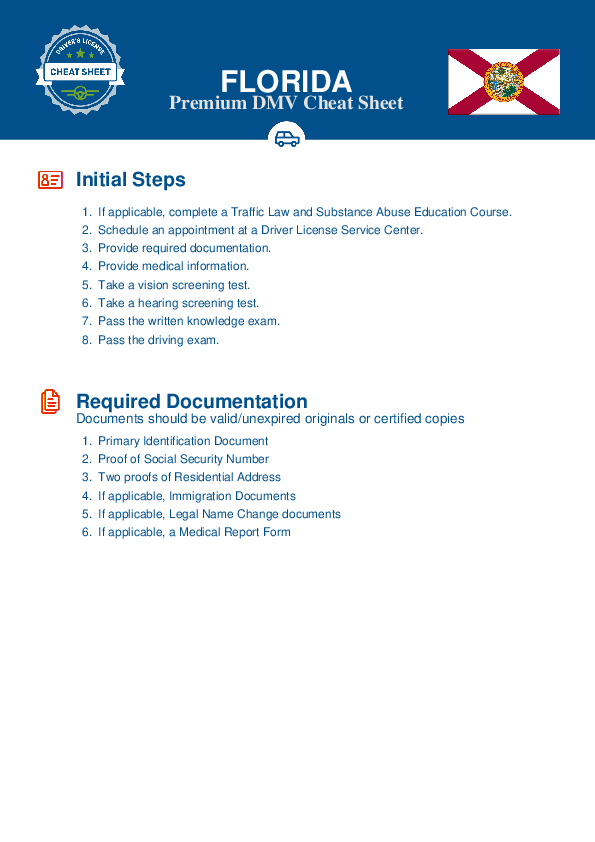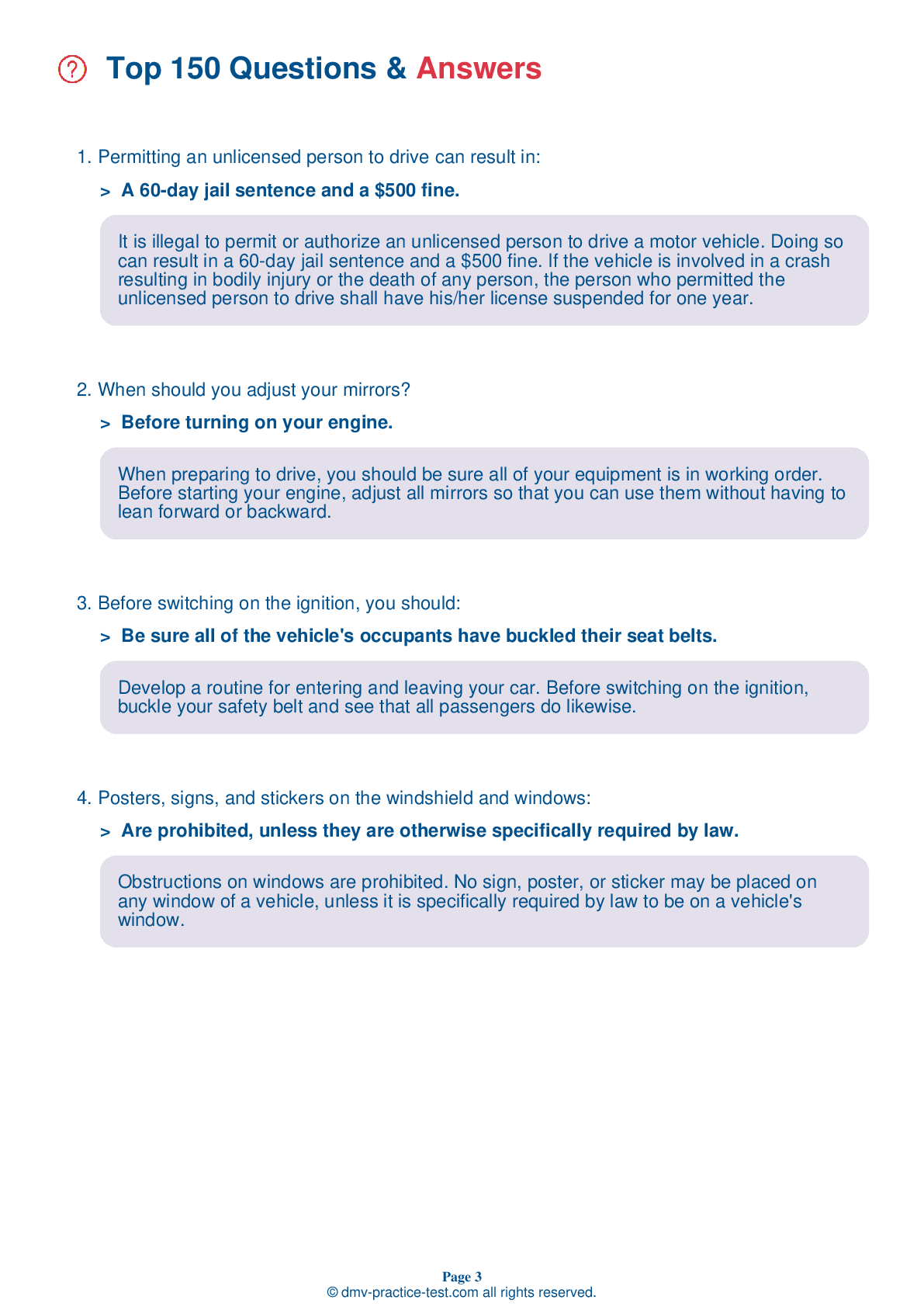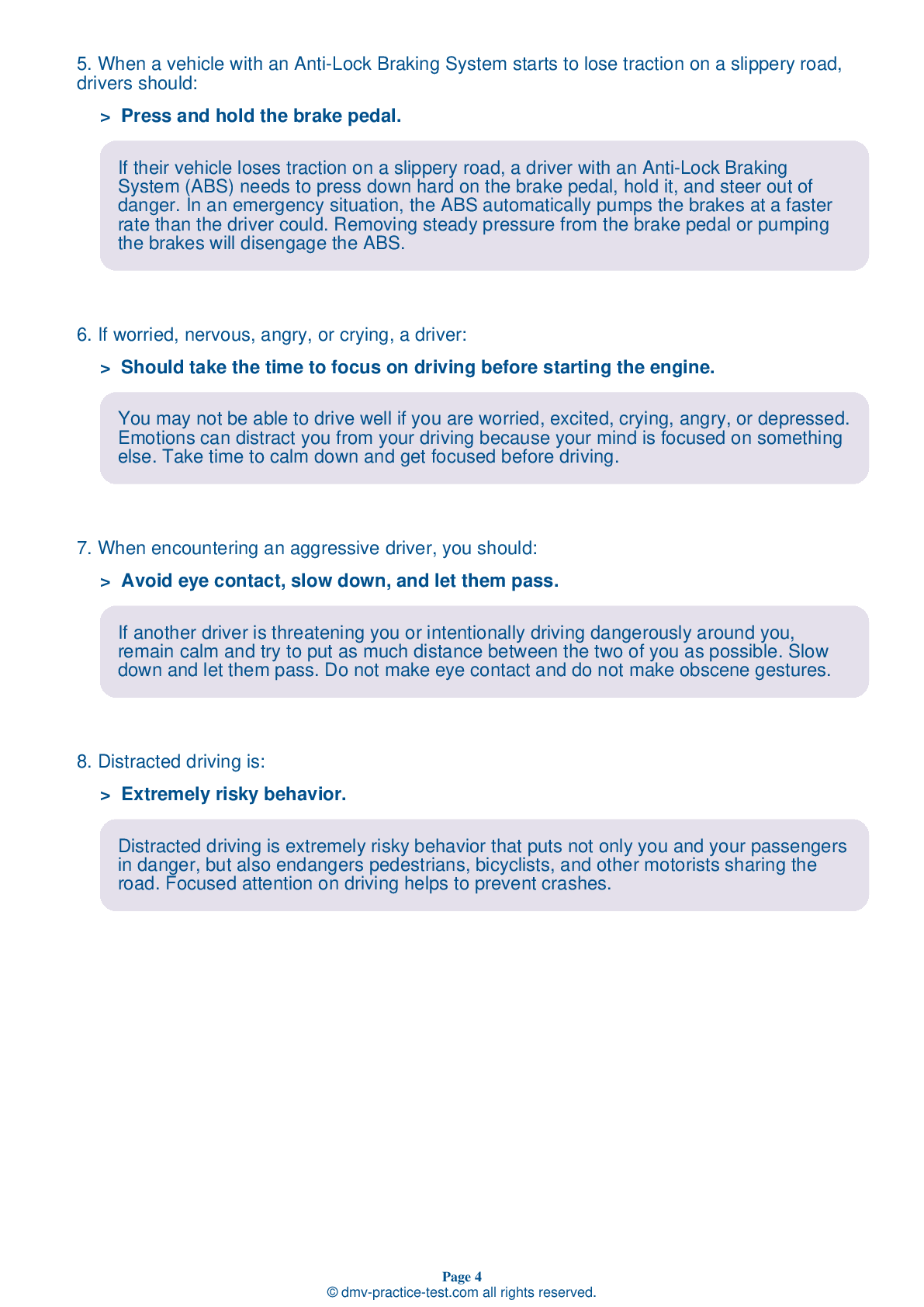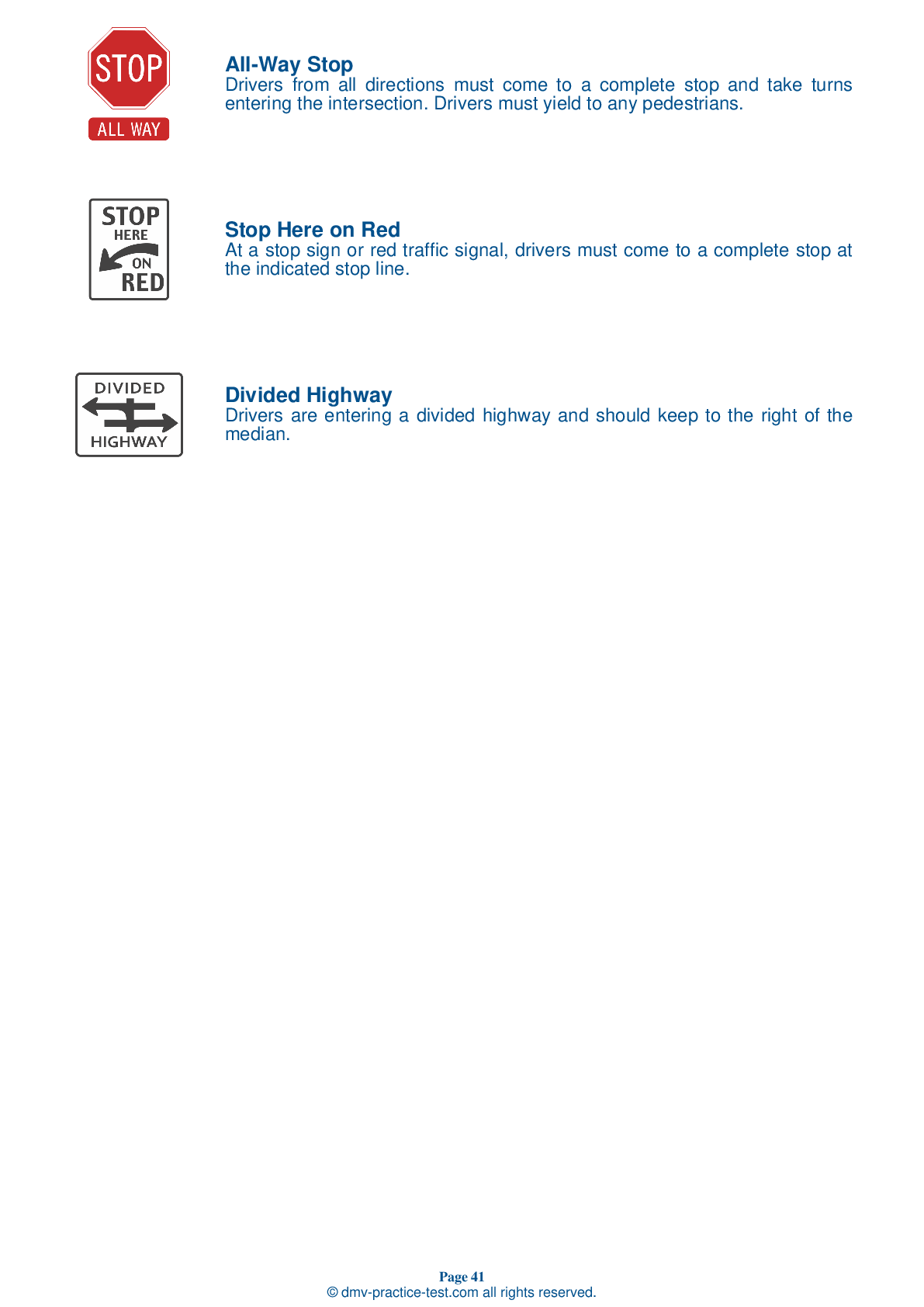FREE Florida DMV Practice Test #12
This set of DMV practise tests for the Florida has been updated for January 2025. It includes questions based on the most important traffic signs and laws for 2025 from the Florida Driver Handbook. To study for the DMV driving permit test and driver's licence exam, use actual questions that are very similar (often identical!) to the DMV driving permit test and driver's licence exam.
Each question on the practise exam has a tip and explanation to help you recall the ideas. Questions about traffic rules, traffic signs, and driving statutes, as well as information from the Driver Handbook, will be included in the written portion of the official DMV test.
You must properly answer 40 of the 50 questions to receive the required passing mark. To help you prepare for your Florida instruction permit or driver's licence, take our DMV practise test.
The DMV exam is offered in a variety of languages.
Using any kind of testing assistance will result in an automatic fail, and the DMV may take additional action against your driver's licence, so stay away from it.
1 . Smoking and preparing to smoke while driving:
Smoking while driving can create dangerous distractions by causing you to take your hands off the wheel and/or your eyes off the road.
2 . Which medication(s) could have negative side effects that affect driving ability?
Any medication could potentially affect your ability to drive. Be sure to ask your doctor or pharmacist about the effects your prescription may have on driving. Read the labels on over-the-counter medicines to determine if their side effects can impair your driving.
3 . When driving on an interstate:
Signal, check your mirrors, and check your blind spot before changing lanes or passing on an interstate. Only stop on the shoulder of the interstate in the case of an emergency and change lanes as infrequently as possible. Cruise control should not be used in heavy traffic or under poor weather conditions.
4 . Increase your following distance when:
You should increase your following distance when you are behind a large vehicle that blocks your vision, when driving in bad weather or heavy traffic, when exiting an expressway, when behind a motorcycle or bicycle, and if someone is tailgating you.
5 . What should you be most concerned about when you see this sign?
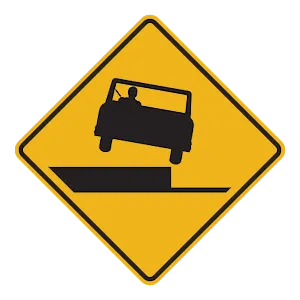
This sign indicates that the shoulder is lower than the road in the area ahead. If you drift off of the roadway and one wheel drops onto a low shoulder, do not slam on the brakes or steer sharply to try to get back onto the roadway. This could easily cause you to lose control of your vehicle.
6 . If someone has consumed alcoholic drinks, what will help the person overcome the influence of those drinks?
Only the passage of time will allow a person to overcome the influence of alcohol.
7 . A “No standing” sign at a certain location means:
A "No standing" sign means that you may only make a temporary stop to load or discharge passengers.
See the exact questions that will be on the 2025 Florida DMV exam.
99.2% of people who use the cheat sheet pass the FIRST TIME
LT gives us an insight on how the cheat sheet provided her with all the study questions she needed before taking her test.
Joe initially studied with the handbook and failed his test, he eventually found us online, studied and pass his test the first time around.
